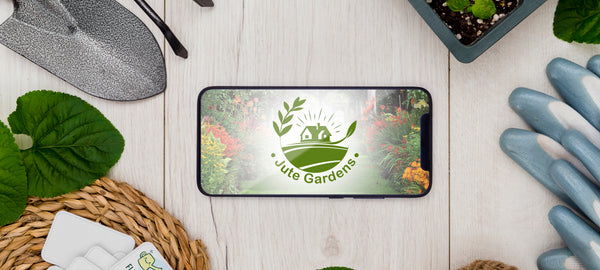
Sustainability by Design: A Green Future With Jute
Jute is an incredibly sustainable fiber derived from plants, and its unique characteristics make it ideal for many uses. From textiles to packaging to construction materials, jute is becoming an essential part of sustainability by design. In this article, we will explore the sources of jute, its properties, and its characteristics. We will explain how it can be used in different applications, and why using jute is beneficial for the environment.
Sustainability of Design
Sustainability by design is an approach to designing products and systems that take into account the environmental, social, and economic impacts of their creation. It embodies principles such as resource efficiency, waste reduction, and sustainable manufacturing processes. Green design encourages the use of eco-friendly materials such as jute which helps conserve natural resources and reduce environmental impacts. This type of sustainable product design can be applied to any industry, from fashion to gardening.
Jute has become increasingly popular as a sustainable solution thanks to its unique characteristics and properties. It’s naturally renewable and biodegradable. It won’t harm the environment when disposed of properly. Jute is also incredibly strong and durable yet lightweight, making it perfect for many different uses.
Jute is becoming increasingly popular for sustainable gardening applications. With its strong, durable fibers and ability to retain moisture, jute makes an excellent material for creating compostable mulch mats, grow pots and other gardening tools. It helps keep the soil moist and acts as a natural fertilizer.
Jute Gardens' products are made from jute. Jute is naturally renewable and biodegradable, meaning it won’t harm the environment when disposed of properly. It also has excellent moisture retention capabilities, making it ideal for sustainable gardening.
When it comes to applications for sustainability by design with jute, there’s no limit! From textiles such as upholstery fabrics or carpets to packaging materials such as biodegradable bags or wraps to construction materials like flooring or insulation panels. Jute can be used in a variety of ways.
Jute Production
Jute is found mainly in Bangladesh, India, China, and other parts of Asia. It has been cultivated for centuries, with records of its use dating back to the 18th century in Bengal and Odisha. Jute plants are tall and have a woody stem that can grow up to five meters high.
Jute plants take between three and six months to mature before they can be harvested. This sustainable fiber is the second most important vegetable fiber after cotton. This is because of its sustainable properties and wide range of applications.
The process begins with harvesting the plants before they mature fully. Then the plants are dried in the sun before being soaked in water for several days until their stems are soft enough to be processed into jute fibers.
Harvesting and processing jute requires a special skill set that has been honed over generations due to its use in traditional weaving techniques. This makes sustainable design with jute incredibly versatile thanks to these skilled craftspeople who have perfected their methods over time.
Jute Characteristics
Jute is also known as 'golden fiber' due to its natural golden color. This makes it highly prized in the fashion and textile industry. It is a long, soft, shiny vegetable fiber that can be spun into coarse, strong threads.
One of the most notable characteristics of jute is its strength. It is especially strong when wet which makes it suitable for use in humid conditions or environments where the material needs to be waterproof. This sustainable material has excellent insulating properties. This makes it suitable for use in insulation materials or items like mats and carpets.
Jute fibers are long and have incredibly high tensile strength. This makes them ideal for weaving into various types of fabrics or making rope. This sustainable resource has good air permeability. Textiles made out of jute are breathable, absorbent, and generally very comfortable to wear. They are great at regulating temperature due to their lightweight nature and breathability.
Environmental Benefits of Jute
Jute is a renewable that is made from the stems of plants that are grown on farms. The harvesting of jute involves selectively harvesting parts of the stem, leaving the rest to grow back. This ensures that the jute can be harvested over and over again.
Jute fibers are 100% biodegradable. They will naturally break down over time without contributing to landfills or producing harmful pollutants. As well as being much more sustainable than synthetic materials such as plastics or polyester fabrics. These materials require petroleum-based products in their production process. The biodegradable nature of jute helps reduce our reliance on non-renewable resources while also reducing CO2 emissions caused by manufacturing processes involved in creating these synthetic products.
In terms of packaging, jute offers numerous benefits over plastic products. This is thanks to its renewable sources and low costs compared to synthetic alternatives. Additionally, due to its strength and water resistance qualities, it can be used to safely package food items during transportation or storage. It is a useful sustainable resource choice for businesses looking to reduce their environmental impacts.
Finally, jute is increasingly being used in sustainable construction projects due to its sustainable source, low cost-efficiency compared to manmade products, and versatile nature. One of the most common uses of jute in sustainable construction is as a binding material for bricks or concrete structures. This sustainable resource helps reduce energy use associated with traditional building materials such as cement.
Click here for an article on how jute can be used as concrete reinforcement.
Social Benefits of Jute
In addition to its practical applications, sustainable design with jute also offers numerous social benefits such as providing employment opportunities in rural communities that grow the plants used for extracting fibers from them; supporting local businesses; preserving traditional weaving techniques, and more.
Green Design and the Environment
The sustainability of design with jute can help reduce plastic pollution by replacing traditional plastics with biodegradable jute packaging materials. This not only reduces the amount of energy required for production but also helps ensure that packaging material does not end up in landfills or oceans for centuries. Additionally, sustainable designs using jute fibers can help reduce carbon emissions associated with manufacturing traditional building materials such as cement.
Social Benefits of Green Design
Moreover, the sustainability of design with jute can also help preserve traditional weaving techniques and provide employment opportunities in rural communities where jute is grown. This helps support local businesses and economies while allowing people from these communities to benefit from sustainable design practices.
Sustainability of Design in Construction
Finally, sustainable design with jute can help create green buildings. Jute fibers are incredibly strong and water resistant meaning they could be used as binding material for bricks or concrete structures; helping reduce energy use during construction and improving insulation within buildings which could result in massive energy savings over time.
Conclusion
Overall, sustainable design with jute can have a positive impact on both the environment and society by reducing carbon emissions associated with production processes while providing employment opportunities in rural areas and preserving traditional weaving techniques. It can also help create more sustainable packaging solutions that will slowly but surely reduce plastic pollution while helping businesses save money on production costs due to its low cost-efficiency compared to manmade materials. Finally, sustainable designs using jute fibers have the potential to significantly reduce energy consumption associated with building construction which could have an incredible long-term impact on our planet’s health.

